J-Life Lesson #46: When living in a part of the country where it snows every day during the winter, check frequently on your air-drying laundry.
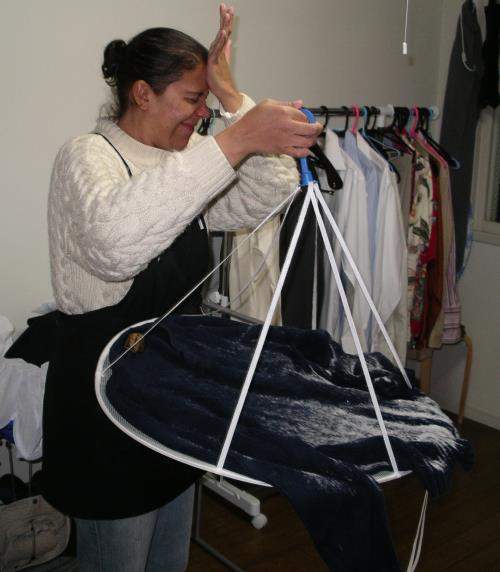

|
J-Life Lesson #46: When living in a part of the country where it snows every day during the winter, check frequently on your air-drying laundry.
 As longtime readers of the blog know, learning to cook Japanese food has been one of the great pleasures of my life here (eating the Japanese food has been Matthew's great pleasure). Last week, I got really ambitious and decided to make a standard ichiju-sansai dinner. Ichiju-sansai consists of soup and three small dishes, as well as steamed rice and tsukemono (pickles). These dishes come from families of foods named by their method of preparation, such as suimono (vinegared dishes), nimono (simmered dishes), and mushimono (steamed dishes). Each dish should come from a different family.
For our dinner, we had a nimono (kinpira gobou, simmered burdock root), an aemono (shira-ae, tofu dressing on vegetables and konnyaku), and sashimi (katsuo tataki, seared bonito) with ponzu sauce. The tsukemono were pickled carrots from my nuka-zuke bed. 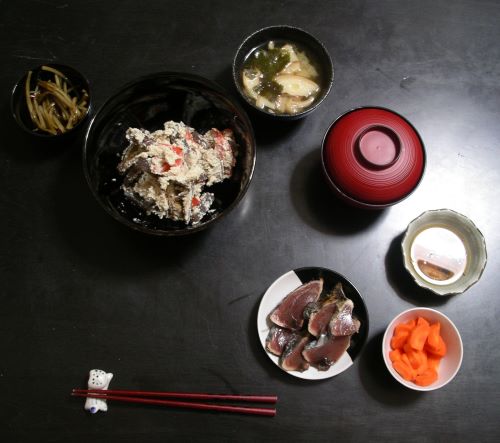 Making the dinner was pretty time-consuming, as was the cleanup. It was totally worth the effort. Fugu, the pufferfish perhaps best known for its potential lethality as a foodstuff, is in season now. This restaurant is advertising its Fugu Festival.
 The festival appears to be featuring a sampler of fugu dishes, including fugu sashimi, fugu chirinabe (hotpot), and fugu zousui (rice porridge mixed with soup). There are four other unnamed dishes available as well. It's 5,000 yen for two hours of nomihoudai (all-you-can-drink) and the fugu sampler ¡½ we're passing on this one. Many people in Japan, male and female alike, hang multiple small mascots from their keitai (cell phones). Mascots range from characters associated with the phone company to well-known comic, manga, or anime characters. I've only got one on my cute pink phone.
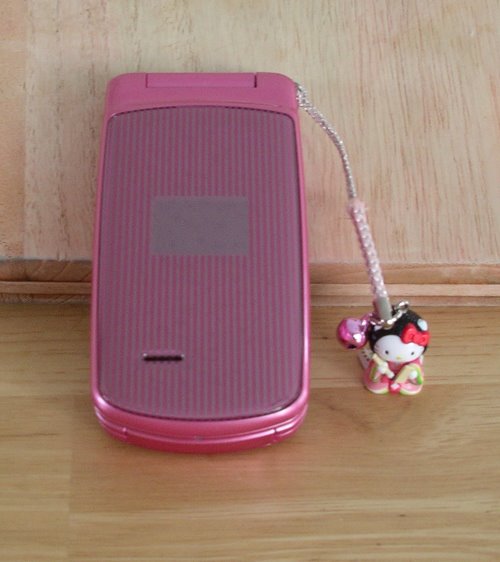 It's Hello Kitty, of course, but she's special. Sanrio makes Hello Kitty merchandise specific to each of the prefectures, representing events or products for which the prefecture is known. This Kitty-chan represents the famous Heian period poetess, Komachi, who according to legend was from what is now Akita Prefecture. Komachi was also regarded as a great beauty, which Matthew thinks makes her name particularly fitting for the Akita Shinkansen.  Visiting shrines and temples is an important tradition for New Year's. At large temples, people go on New Year's Eve, and the temple bell sounds 108 times to ring in the new year. Other people arise early, and welcome the new year by visiting a shrine or temple at sunrise. In any case, most people go sometime in the first three days of January. This visit is called hatsumoude.
Our nearest shrine, perhaps in recognition that no one wants to be up at dawn in Tohoku in winter, invited the people of the surrounding neigborhoods to visit at 8 am on New Year's Day. We figured this would be a good way to enjoy an old tradition. So, despite our late night the night before, we got up early and made the snowy trek to the shrine grounds. There we found bonfires, friendly greetings, fish paste, and sake. From time to time someone would approach the shrine itself to make an offering and prayer, but mostly it was conversation, drinking, and eating around the bonfires. We ran across several people who remembered us from undoukai. People also wrote their prayers for the new year on paper or wood, which they threw into the fire. The rising smoke carries the prayers up to the gods.  After we were there a short time, a group of men were leaving, and insisted we should go with them. We were uncertain, but they seemed friendly enough, so off we went. Along the way, we learned that our destination was a nearby temple, where there would be more sake, fire, and food. Also along the way, we overheard this exchange (in Japanese): "It's fun bringing the gaikokujin (foreigners) with us." "Don't call them gaikokujin. Call them nakama (good friends)." The temple was one very close to our house, and it was beautiful in the snow. 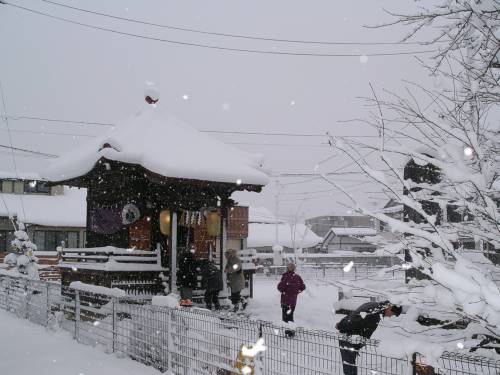 We paid our respects at the altar, then enjoyed more sake along with some snacks, and listened to our new friends speaking in the Tohoku dialect. Before everyone returned home to enjoy osechi ryouri, we got a group photo. 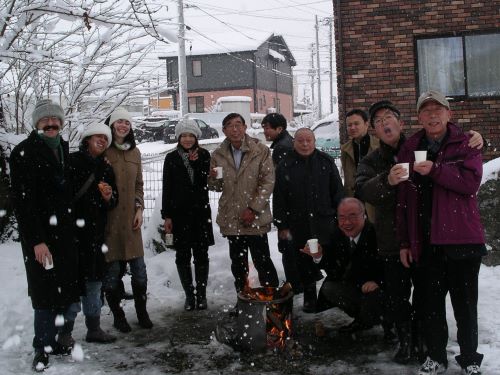 It was an auspicious start to the new year, and left us feeling warm inside. We've made a calendar of our favorite photos from the blog (and other photos we've taken here), and it's now available for sale! We make $5 off each one — not much, but it does help keep the site running. Just click the "related link" for this entry, or look for the ad over to the right.
We now return you to your regular blog blathering. December is the busiest month of the year in Japan. Nengajou need addressing, bonenkai (year-end parties, of which there tend to be many) need attending, and houses receive thorough cleanings. By the time New Year's Day rolls around, people are tired and want some relaxation. Traditionally, families would visit their local shrine to offer prayers for the new year before retiring at home for a day of drinking sake, reading nengajou, and eating osechi ryouri.
Osechi ryouri are the traditional New Year's foods. Each food is eaten for a purpose: health, longevity, or wealth, among others. Historically, they are prepared in advance and stored in a large, three-tiered box (juubako) until New Year's Day; consequently, they tend to be heavily salted, sweetened, or vinegared for preservation purposes. Although people still make osechi at home, you can also buy most of the traditional foods already prepared. We had a small subset of osechi, including some non-traditional treats that had been given to us as gifts earlier in the weekend.  Clockwise from the top left: kuromame (sweetened black beans, eaten for health); iburigakko (smoked pickled daikon radish, an Akita specialty that a friend gave us); Japanese olives (a gift from the same friend); and salt-grilled yellowtail. 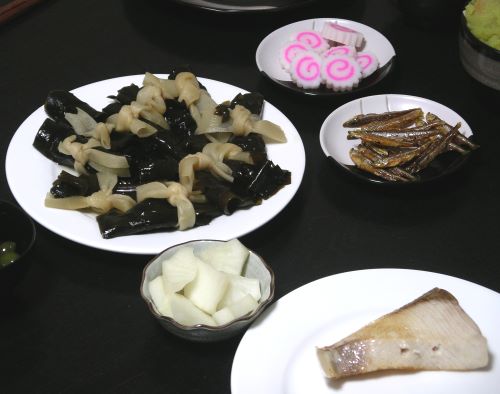 Clockwise from the left: konbumaki (simmered kelp rolls tied with gourd strips, eaten for happiness); kamaboko (fish paste; red and white are auspicious colors for the new year and symbolize celebration); tazukuri (candied sardines, symbolizing an abundant harvest); and rice bran pickled daikon.  Clockwise from left: another look at the kamaboko; kinpira gobou (simmered burdock root and carrot); ringo kinton (mashed sweet potatoes and apples; eaten to bring good luck); another look at the tazukuri. Not technically part of the osechi, ozouni is also traditionally eaten on New Year's Day. According to our local friends, ozouni in Iwate consists of a clear soup base, chicken, daikon, carrot, ikura (salmon roe), Japanese parsley, and mochi. We had ours for lunch, before a lovely drive to Semi Onsen, where we enjoyed a New Year's soak in the rotenburo, surrounded by two feet of snow. 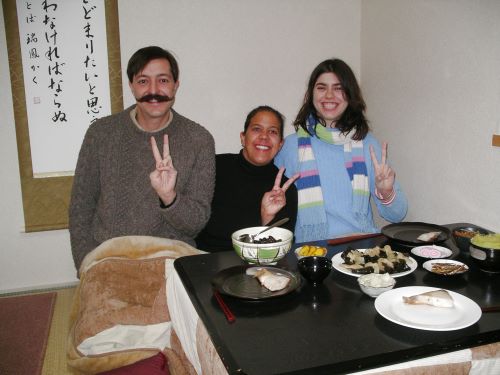 Happy New Year! The management of Let's Sharing and Please Take Recess rang in 2008 together. Here we all are on New Year's Day, ready to eat the delicious specialty foods of New Year's. As you might expect, the most important holiday of the year has special decorations that go with it. These range from ropes and arrows decorated with paper Shinto wards and seals, to freestanding decorations of bamboo and pine (two particularly auspicious plants). Of course, many decorations include pictures or writing related to the year's zodiac animal — for 2008, the mouse.
You're supposed to put up your decorations on December 30. The 29th and 31st are somehow incorrect. We particularly liked some of the wreath-shaped decorations, so that's what we opted to get. First, we hung a medium-size wreath outside our door. 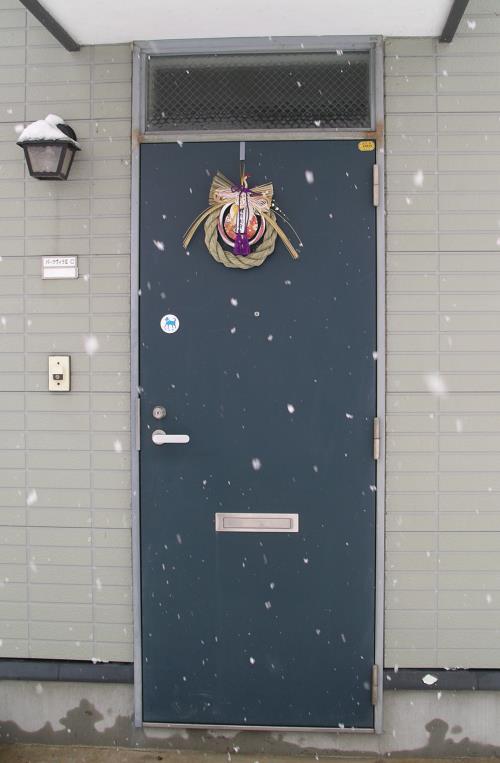 Then, inside the genkan (entry area), we hung a smaller wreath. It's about 4" across. 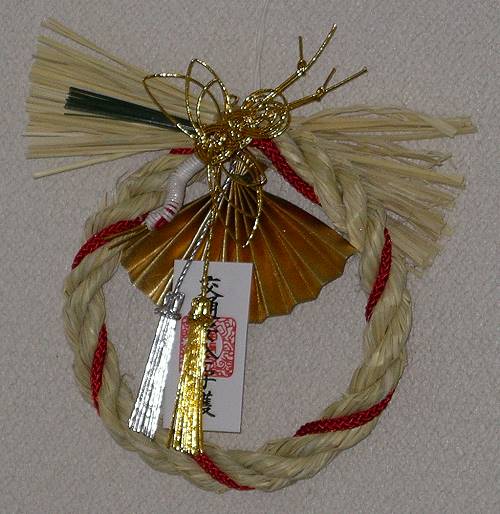 And finally, in our living room, we put this mouse and barrel decoration on the shelf with all our holiday cards. 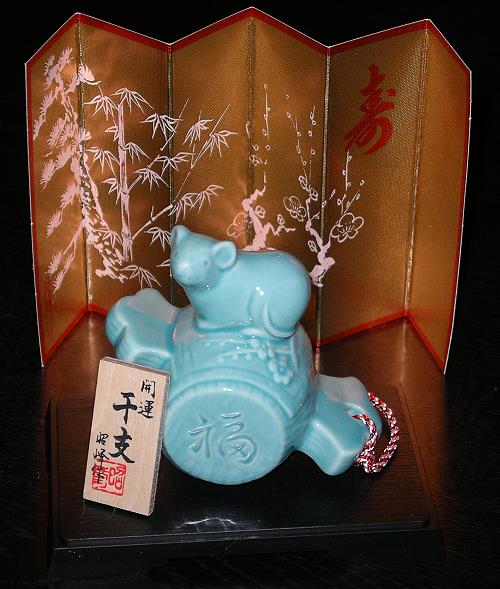 Nengajou are traditional New Year's postcards in Japan. They are sent to arrive on or after New Year's Day. It's even considered rather awkward if they arrive early! Late is okay, but it's really best for them to arrive on January 1.
For this reason, the post office has a special system set up. When correctly marked as a nengajou, cards are set aside for special handling. Then on New Year's Day, they mobilize thousands of extra employees to deliver all the cards on the same morning. There's a long tradition of handmade cards. In the month before New Year's you can buy blank postcards, which you can decorate by hand with stickers and rubber stamps. You can also use a stencil machine, print them from your computer, or simply draw them by hand. Recently, there are also services in camera shops and on the internet to order your own custom designs. People without such creative inclinations can buy them with pre-printed designs. This year, instead of Christmas cards, we decided to send out nengajou. We used stickers and rubber stamps to decorate ours. A nice feature of making them by hand is that it's easy to make each one unique. 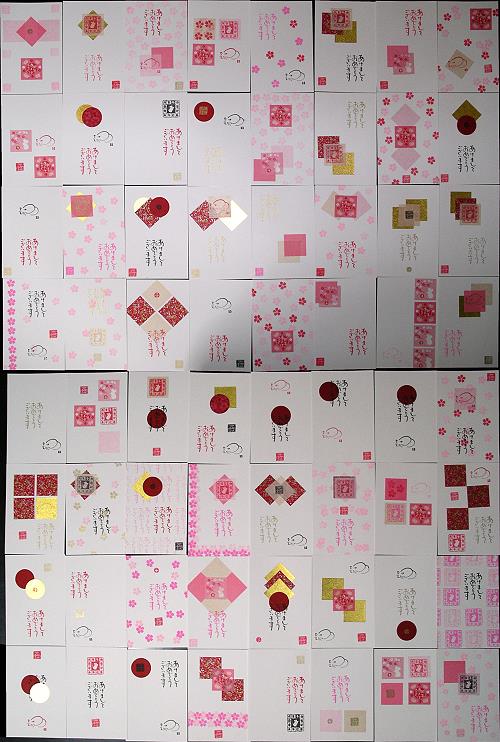 And here's a closeup of one card. 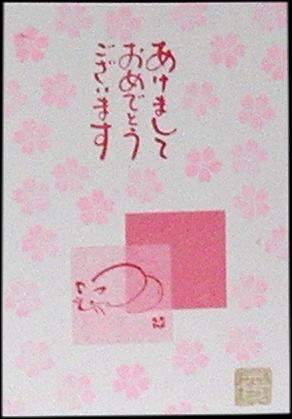 2008 is the "Year of the Rat" on the Asian calendar. There doesn't seem to really be much distinction between mice and rats here (the Japanese word for mouse is actually "small rat"), so it's really treated as the Year of the Mouse. That's why there are all the cute little mice on our nengajou. Back Next |